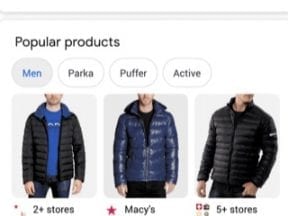Editor’s note: As of September 2023, Google deprecated HowTo Schema.org markup and reduced the visibility of FAQ rich results to “well-known, authoritative government and health websites.”
It’s increasingly difficult for organic search listings — the 10 blue links — to win the click. Organic real estate is shrinking as ad blocks grow. And competition is increasing from other organic features, such as map packs, carousels, and image results.
Moreover, the 10 blue links on the first page of search results are returning diminishing results, especially if a link is not one of the top three. Rich snippets, which are powered by structured data, can make your links stand out.
Here seven types of rich snippets that enhance blue links and thus drive clicks and sales.
1. Products
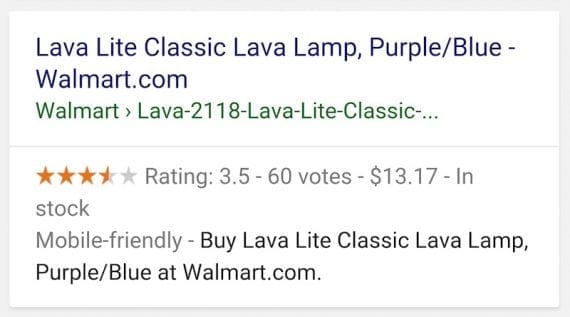
Product rich snippets can include price (“$13.17”), availability (“In stock”), and rating results (number of stars, average rating, and number of votes).
The most purely ecommerce of them all, product rich snippets contain visual triggers that an item is for sale: price, availability, and review ratings. You could also use structured data to put a “Product” flag over an image in image search results.
Merchants sometimes avoid structured data because they believe it turns the search results into a price battle versus a choice based on the benefits displayed in the title and meta description. But given its wide adoption in ecommerce, structured data at this point is a necessity. Not using it is a disadvantage.
2. Sitelinks Search Box
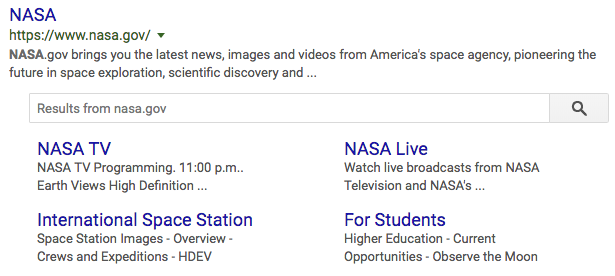
Structured data on a home page can trigger Google sitelink search boxes.
A sitelinks search box allows shoppers to use a site’s internal search from Google. Structured data on a site’s home page enables this feature, which lands shoppers directly on the site’s search-results page — one step closer to making a sale.
3. Video

Structured data can trigger Google video rich snippets.
Google includes videos in seemingly every possible search result to entice an increasingly mobile audience. Video structured data via the VideoObject schema places the description, thumbnail, date, and duration in the results.
A new Google feature in video rich snippets is called clips or key moments. These enable searchers to skip to one of several points in a video, each with its own short description, directly from the search results page.
For more on video optimization, read “11 Steps to On-site Video SEO.”
4. Frequently Asked Questions
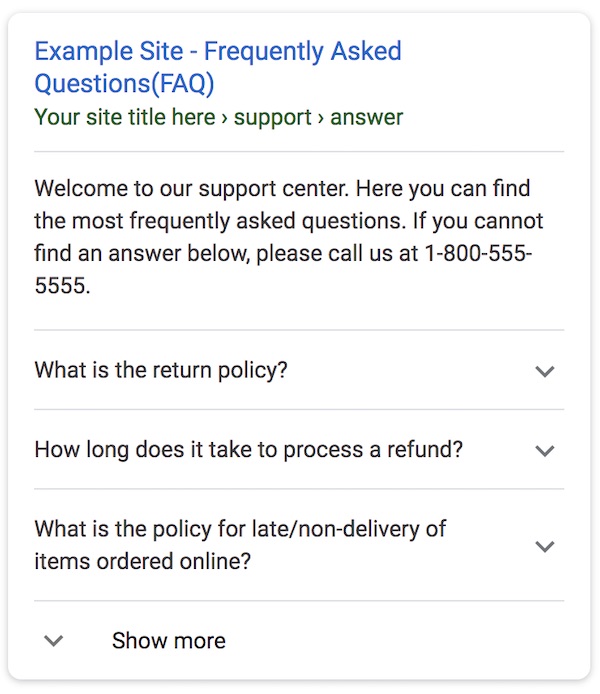
Structured data in a frequently-asked-questions page can trigger Google FAQ rich snippets.
Mark up pages with multiple short question-and-answer pairs with FAQPage schema to trigger a featured snippet on the search results page, or an Action on the Google Assistant.
A frequency asked questions page is most commonly used for customer service. But FAQs can also answer short, simple questions around products and their usage. Make sure to keep each FAQ page focused on a single theme or topic. Then use multiple pages to your advantage for organic search.
FAQs schema is supported only for controlled pages wherein users cannot submit answers. For example, you couldn’t use FAQPage on forum pages or where users answer questions from others.
5. Questions and Answers
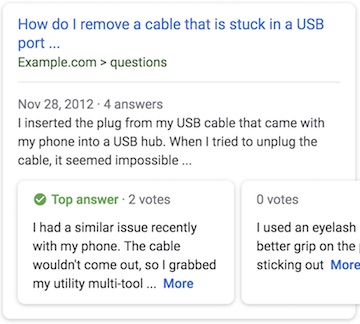
Structured data in question-and-answer pages can trigger Q&A rich snippets.
When you offer visitors a page to ask and answer questions, use the QAPage schema. Apply this structured data type only for user-generated content, not for articles or blog posts and not for company-written FAQs, although representatives of your company, such as customer service agents, can participate.
6. How-tos
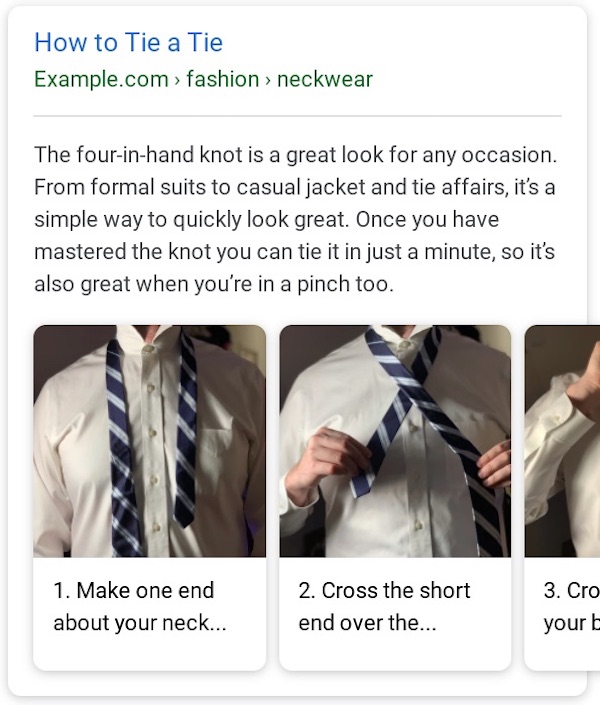
Structured data in step-by-step content pages can trigger how-to rich snippets in Google search results.
How-to content provides an excellent way for companies to demonstrate knowledge of their products and concern for their customers.
Use HowTo schema to mark up pages that describe a sequential set of steps to complete a specific task. Include images and videos in the mark-up so they will be displayed in the rich snippet.
To trigger a rich snippet in search results, the page should focus on the task versus, say, a product page with how-to-use steps at the bottom.
7. Logo in the Knowledge Graph
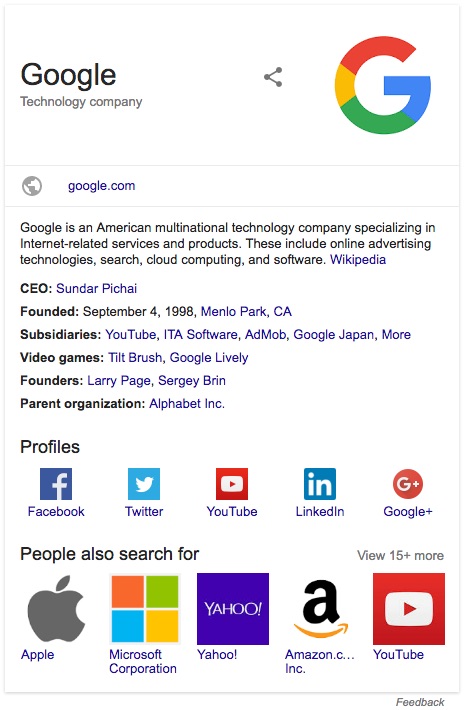
Structured data on your home page can determine the logo Google uses in its Knowledge graph panel.
When a shopper searches for your store on Google, you want the best representation of your logo in the Knowledge Graph panel in search results. Use the Organization schema type on your home page to mark up the URL for your ideal logo file.
While you’re at it, include the data for the other elements you want to display in the Knowledge Graph, such as a description, customer service phone numbers, headquarters location, founders and CEO, the date of your founding, and other company information. See the entire list of supported elements, and match the ones that Google supports to the Knowledge Graphs you see in search results.
I should add that Google discontinued support for Organization structured data. But including it on your home page communicates it to Google nonetheless.


